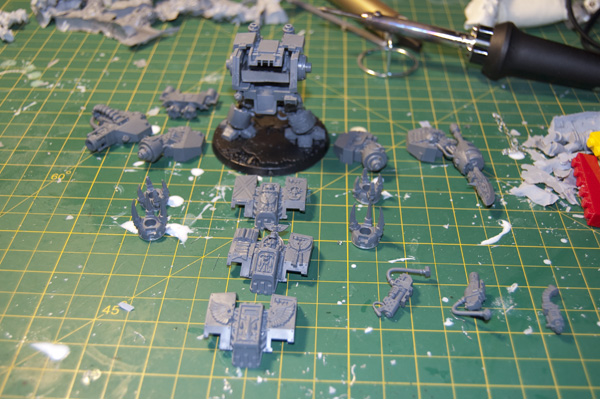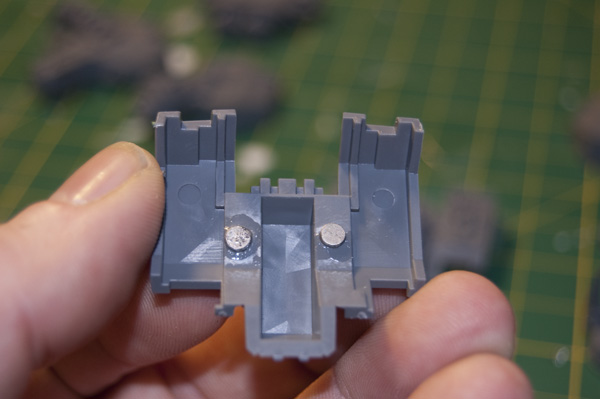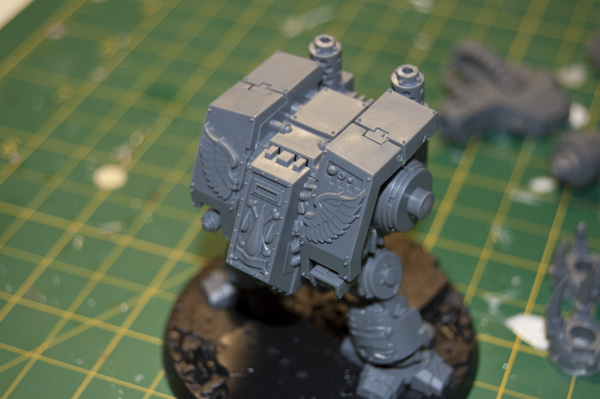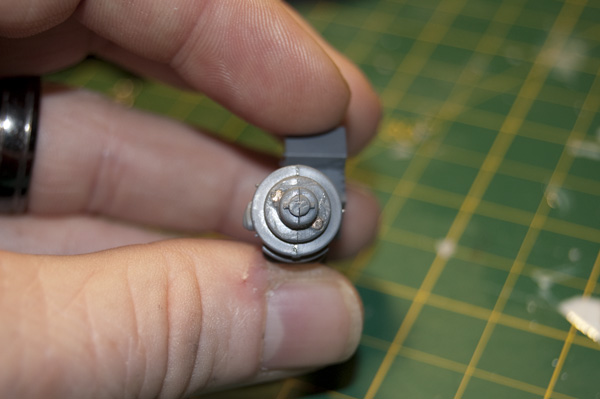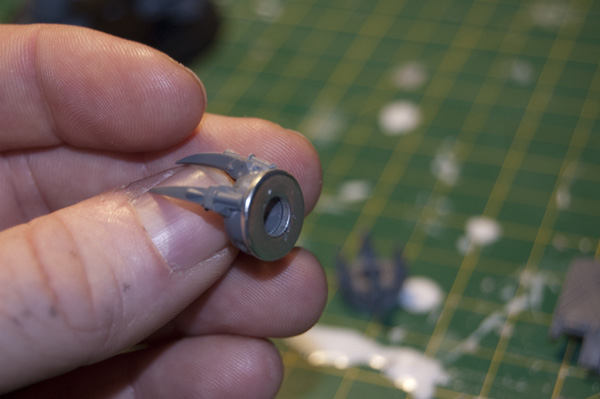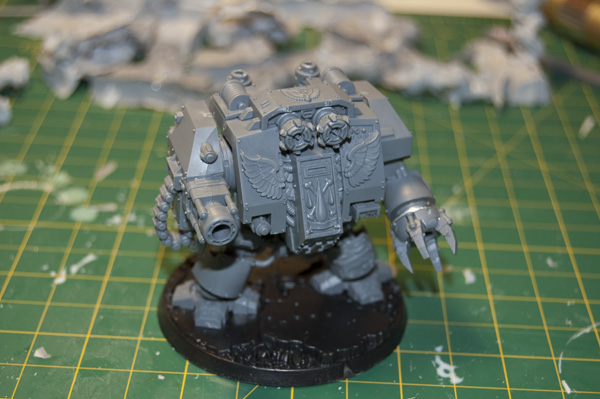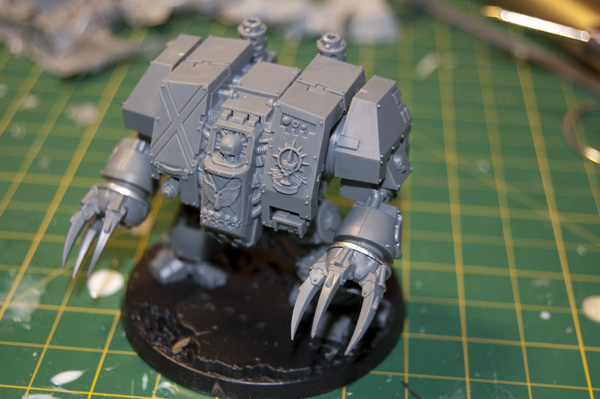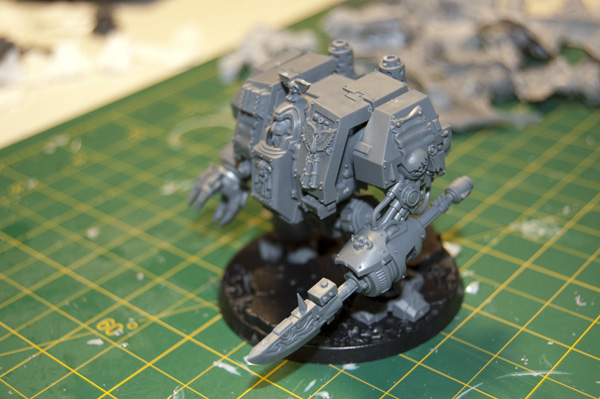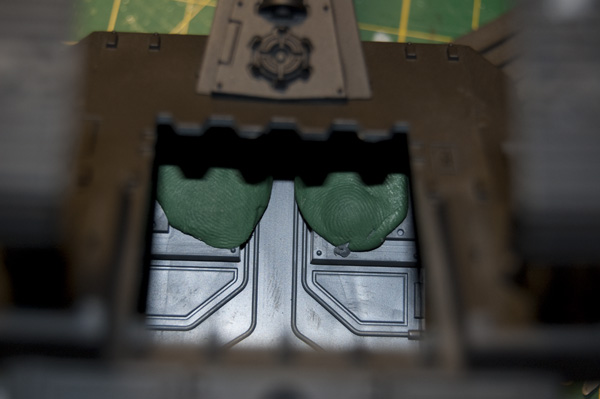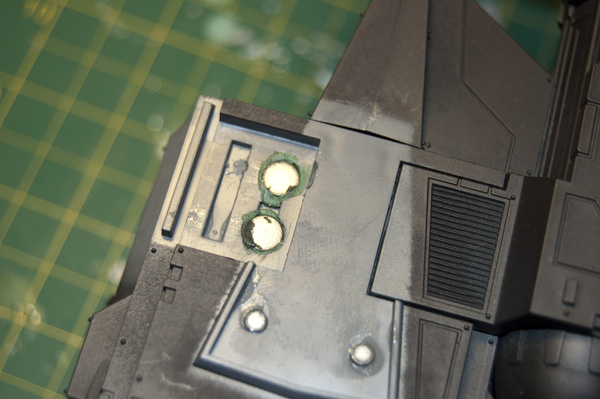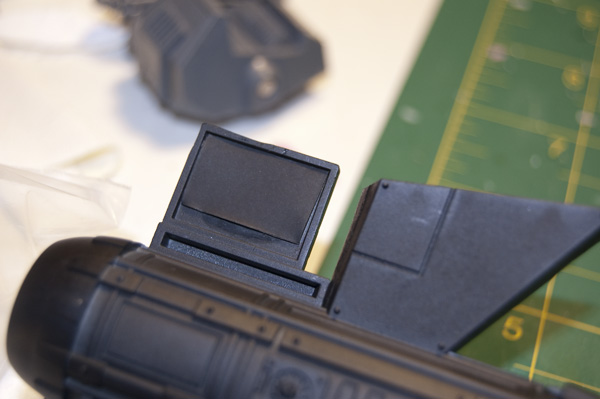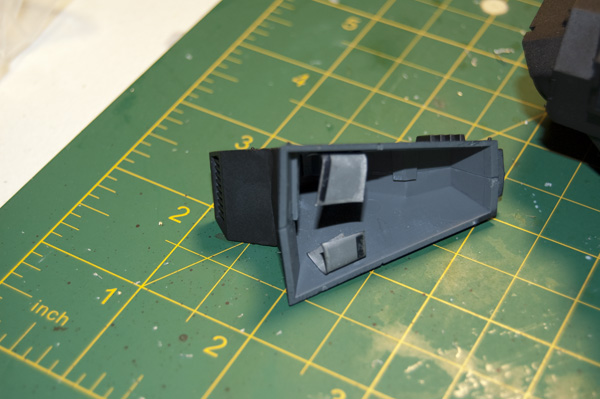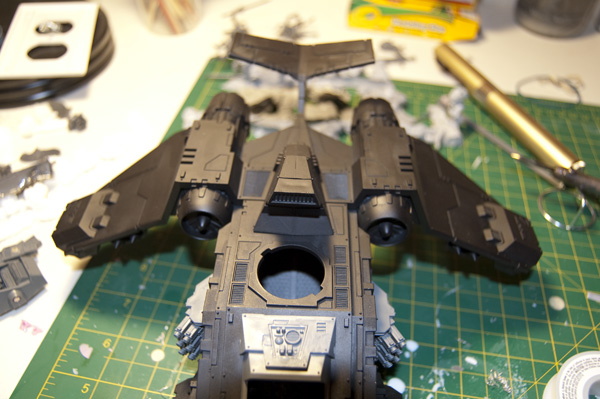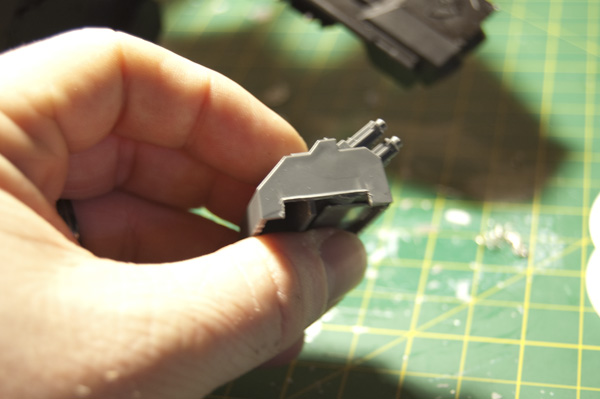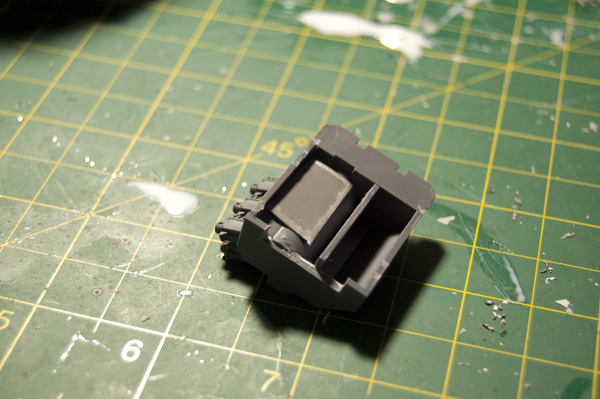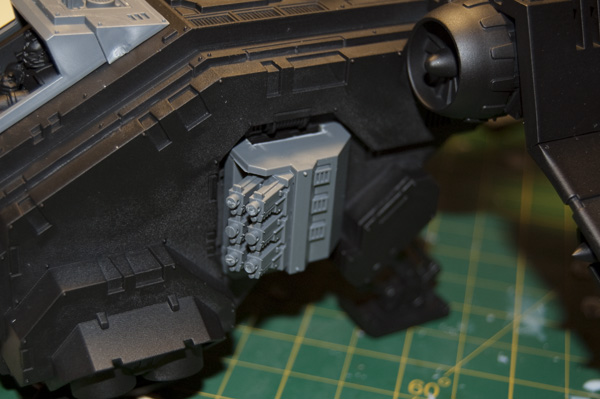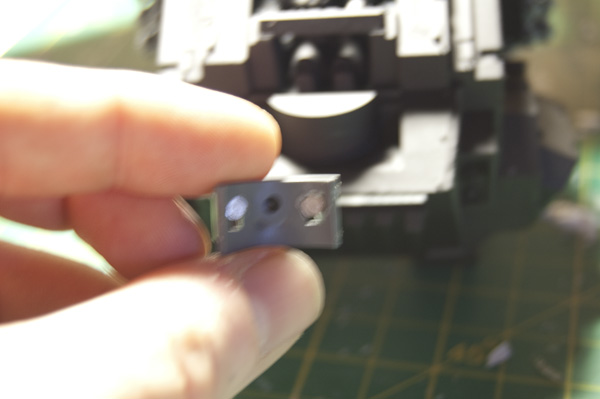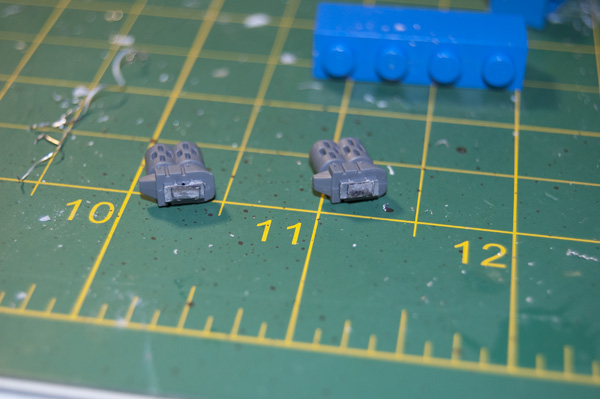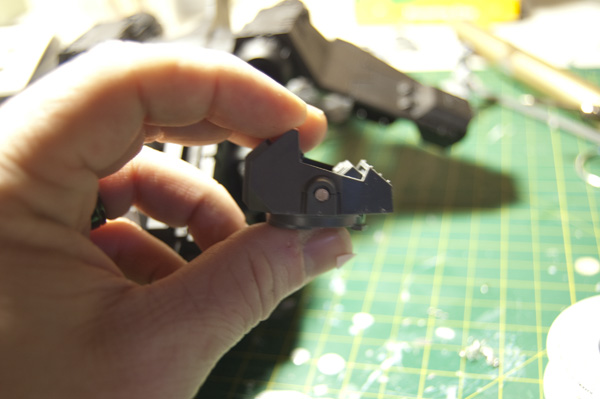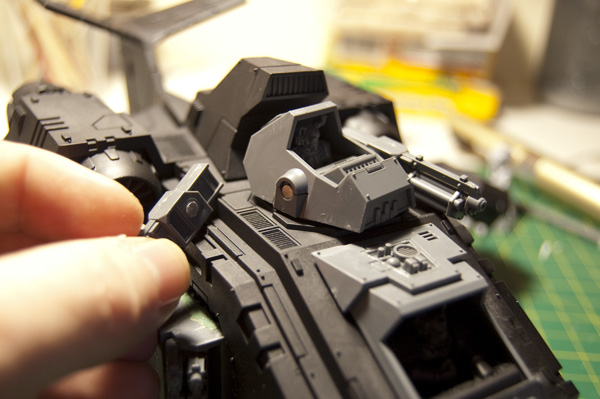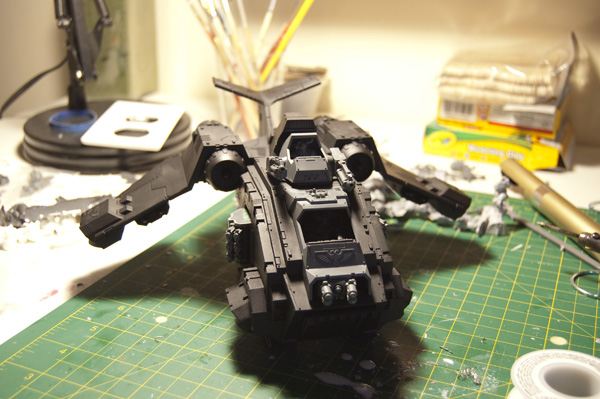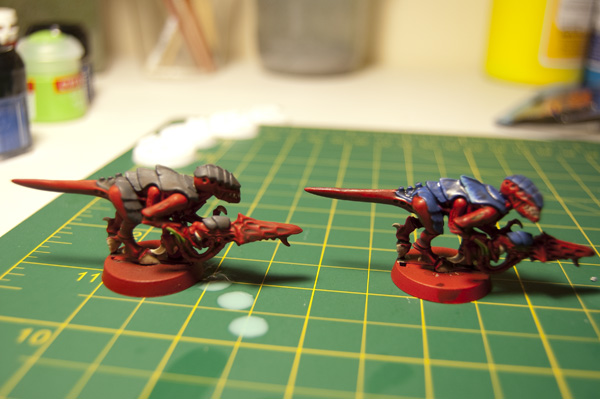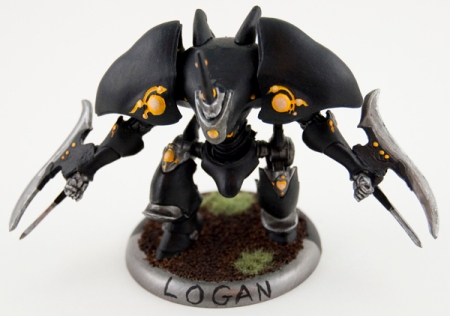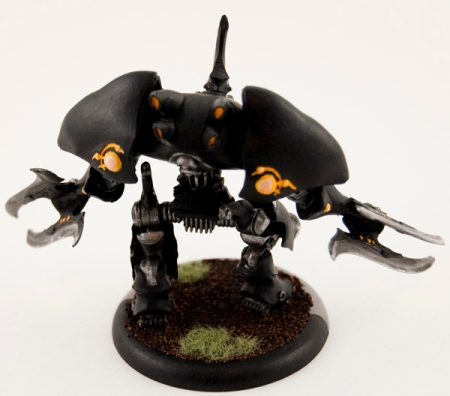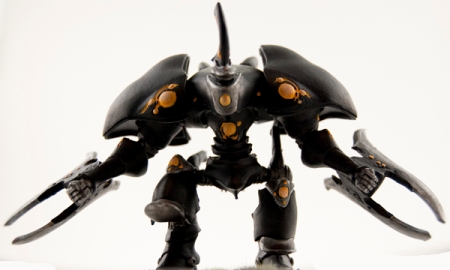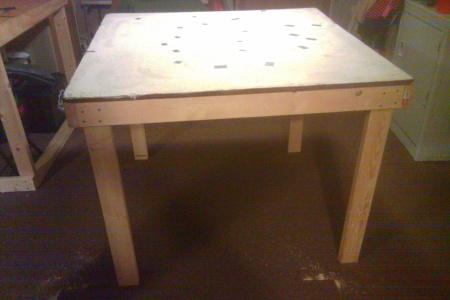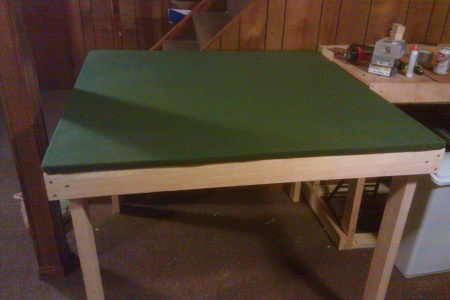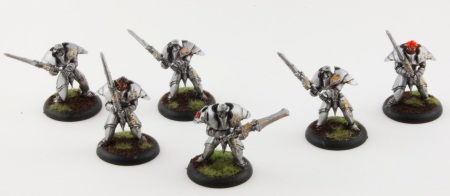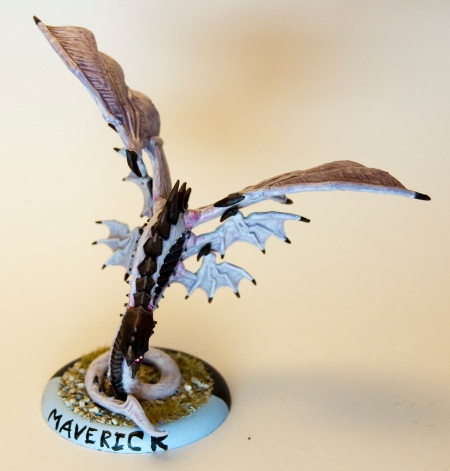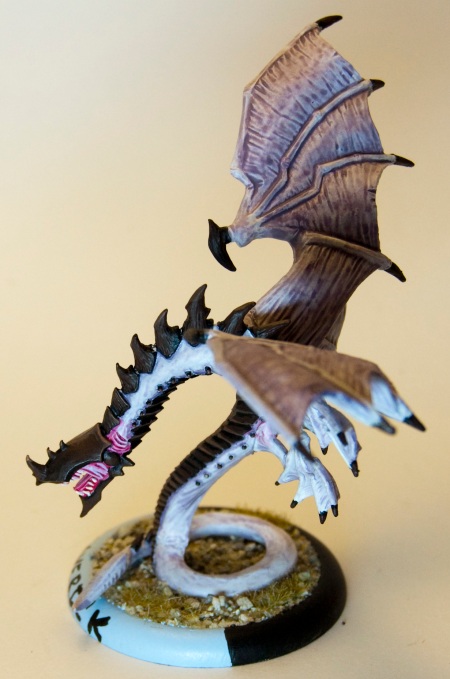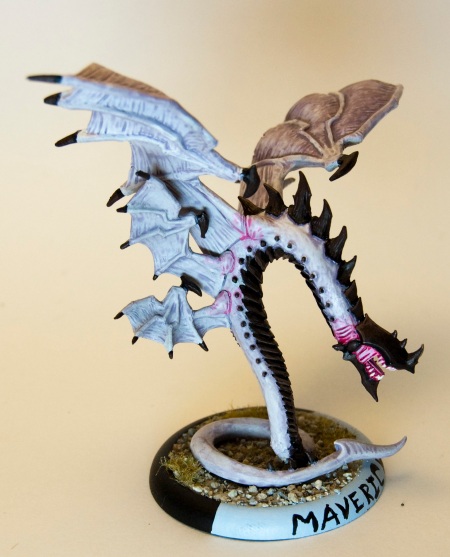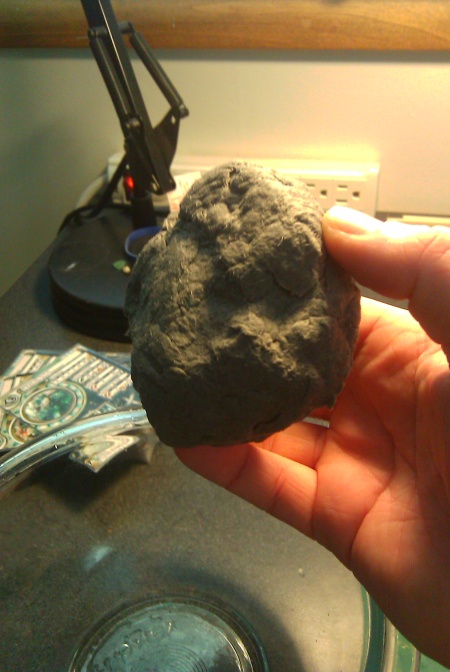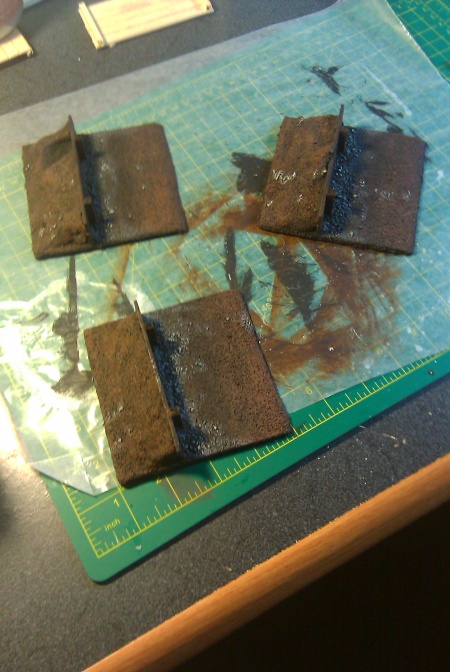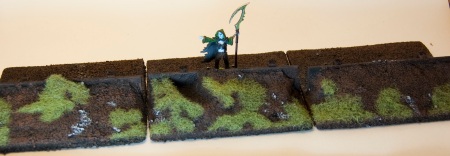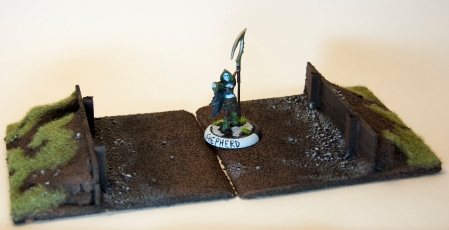Hello again everyone. As promised, here is my guide on magnetizing the Furioso Dreadnought from the Space Marines: Blood Angels Codex. The furioso is a titan on the battlefield and I have had great success. The problem is that the kit comes with so many goodies, it is impossible to choose a layout. Therefore: this guide. In many sections of this article I use something called core steel. Core steel is specifically engineered for its magnetic properties. It is also hard to find. With that in mind, anywhere I use core steel, you can use plasticard and a magnet. It will work the same. If you are interested in acquiring some core steel, send me a message. I magnetized 3 parts of the dreadnought which I will show you. I have not magnetized (or even attached yet) the under arm guns. I am playing with the idea of not magnetizing them as I always take the default loadout. If I do decide to magnetize them, I will do a second post on it (it looks easy enough anyway, just 4 1/16 magnets). Anyway, here goes:
Torso
When building your dreadnought (from now one, simply DN),be sure to put two 1/8″ magnets on the top piece (underside) near the back. That will be for the magna grapple later. When placing them, try to match it to the divets on the magna grapple. When building the torso do not glue the face plate on. Be sure to put the faceplate in place so the body glues together correctly, but be sure you can remove the faceplate afterwards.Once the torso “box” is dried, I glued a strip of core steel across the front (this will be for the face plates). You can sub in a piece of plasticard with 1/8″ magnets instead).
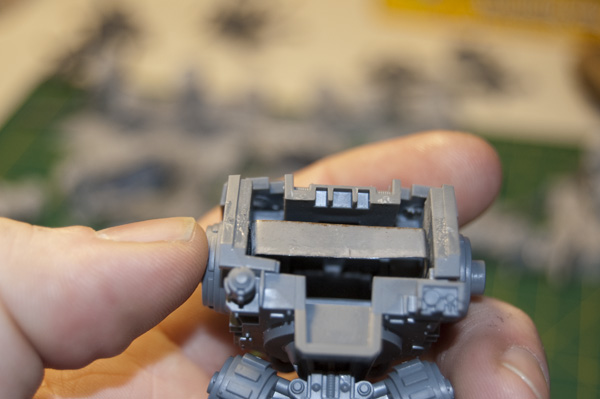 Looking in the picture above, you can make out the magnets in the back for the magna grapple. Sorry they are so hard to see. I put this together and then decided to take pictures. This is all the modification we need to make to the torso.
Looking in the picture above, you can make out the magnets in the back for the magna grapple. Sorry they are so hard to see. I put this together and then decided to take pictures. This is all the modification we need to make to the torso.
Faceplates
The faceplates are super easy. I just put two 1/8″ magnets on the backside of the faceplates that lined up with the core steel band, and done!
Now your DN can have any of the three faceplates at any time.
Magna Grapple
Another easy job here. Since we already have the magnets inside, we just need to match the polarity and attach magnets to the grapple. 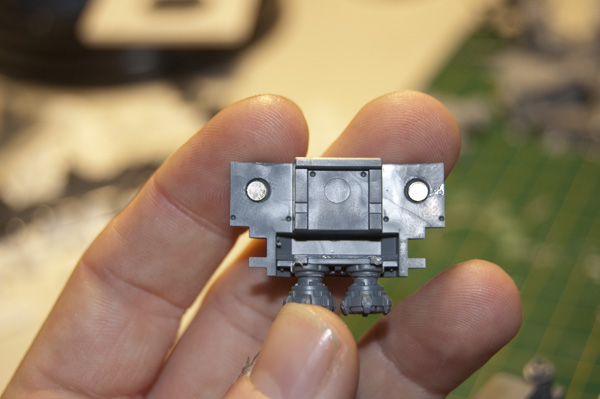
The magna grapple already comes with 2 divets in it, and it makes the perfect place to put the magnets. You may need to drill a little bit, but not too deep. After that, the piece just snaps on all perfect and such. Notice how those sneaky people at GW made it so that the magna grapple wouldn’t fit on when the librarian faceplate was on. Clever.
Arms
Interestingly, the arms go on and off just fine without magnets, so that makes it easy. If yours do not fit on, then you just need to glue 1/8″ magnets inside the arm (sticky tack is your friend here, just sticky a magnet to the end of a thin tool and push it into the arm hole) and put a 1/8″ magnet on the arm stub of the torso. Like I said though, I didn’t need to. The librarian arm and the flak cannon are complete without any need to change. When making your “hands” you will notice there aren’t enough “thumbs” to make both “hands”. What I did is just make the close combat weapons with the 4 short fingers and the blood talons with 3 claws (ignoring the extra slot). It isn’t perfect, but it doesn’t incur any more cost. Then, if you notice, the hands and hole are the perfect dimensions of 1/4″ steel washers. Go get some of them (I’ll wait). When you get back, glue them onto the hands. Then, on the arm stubs, glue two 1/6″ magnets and watch and the hands snap into place perfectly. Now you can swap them out with ease.
And that’s it! Like I said before, I have not made a decision about the under arm guns. If I do add them, it will be in a second article. Enjoy!
Here are some pics of my assembled DNs
